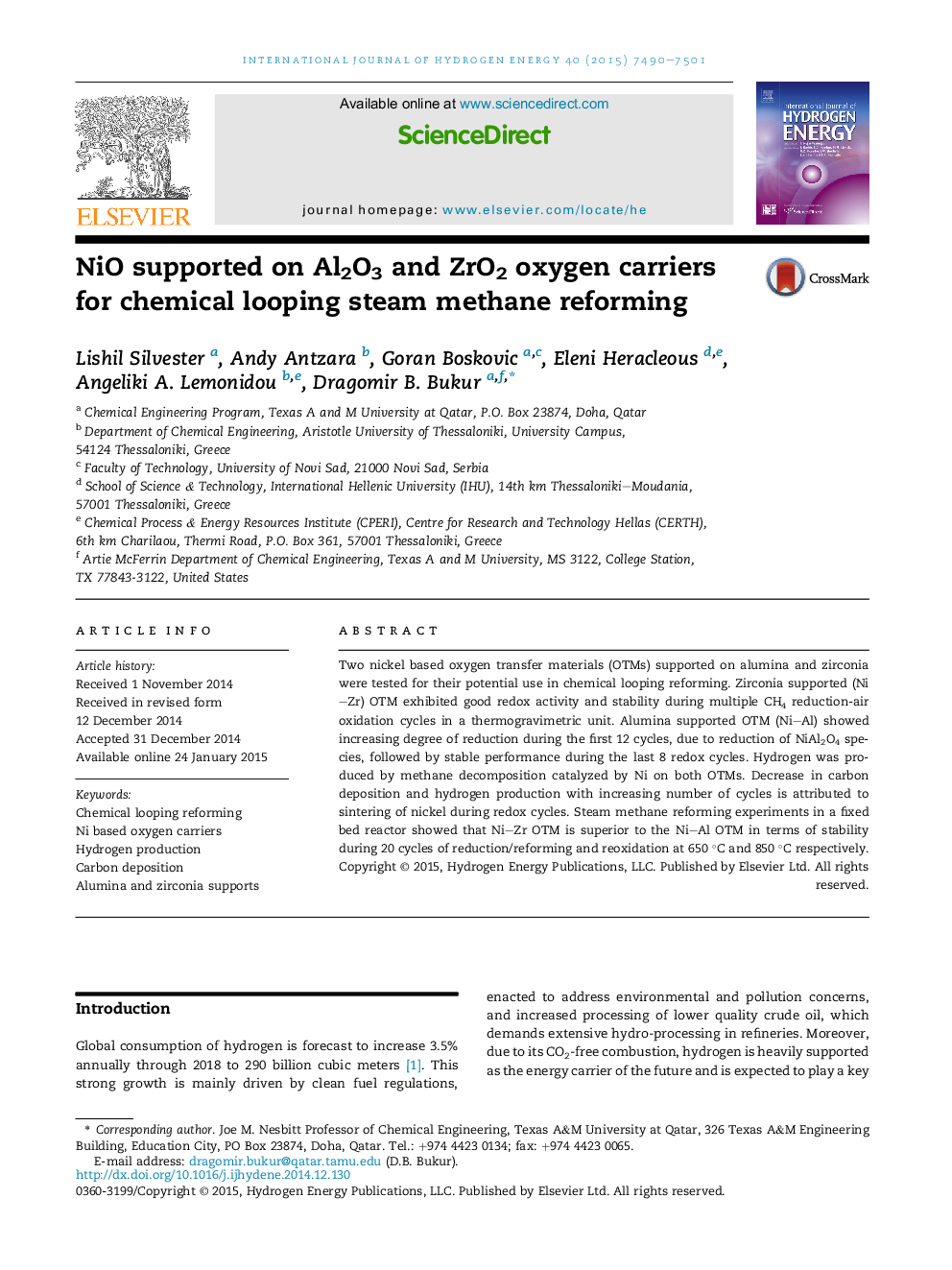| Article ID | Journal | Published Year | Pages | File Type |
|---|---|---|---|---|
| 1279721 | International Journal of Hydrogen Energy | 2015 | 12 Pages |
•Ni–Zr oxygen carrier exhibited stable redox properties during 20 cycles in a TGA.•Reducibility of Ni–Al oxygen carrier increased with cycles.•Methane decomposition was the major pathway to form C and H2 on Ni–Al and Ni–Zr.•Ni–Zr had superior stability relative to Ni–Al in chemical looping reforming.
Two nickel based oxygen transfer materials (OTMs) supported on alumina and zirconia were tested for their potential use in chemical looping reforming. Zirconia supported (Ni–Zr) OTM exhibited good redox activity and stability during multiple CH4 reduction-air oxidation cycles in a thermogravimetric unit. Alumina supported OTM (Ni–Al) showed increasing degree of reduction during the first 12 cycles, due to reduction of NiAl2O4 species, followed by stable performance during the last 8 redox cycles. Hydrogen was produced by methane decomposition catalyzed by Ni on both OTMs. Decrease in carbon deposition and hydrogen production with increasing number of cycles is attributed to sintering of nickel during redox cycles. Steam methane reforming experiments in a fixed bed reactor showed that Ni–Zr OTM is superior to the Ni–Al OTM in terms of stability during 20 cycles of reduction/reforming and reoxidation at 650 °C and 850 °C respectively.
